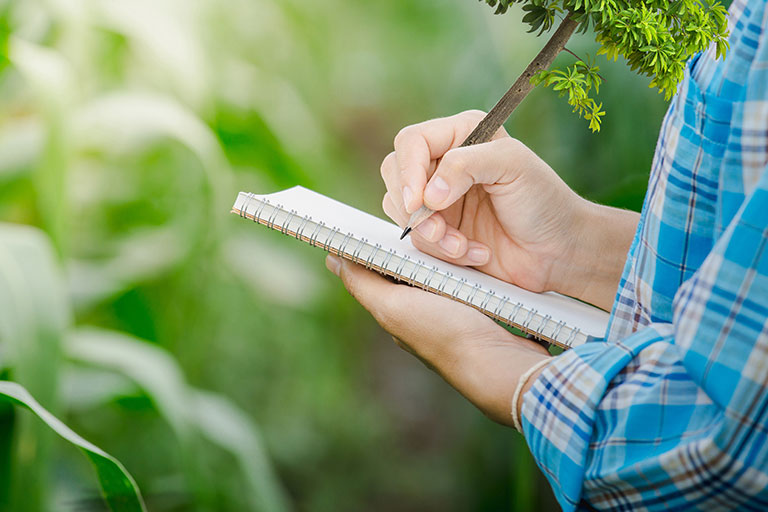By Vicki Spencer, Master Gardener
When I first started gardening, I sought advice from family, friends and gardening guides, but I never thought about recording my observations. It was only after inheriting a copy of my grandmother’s diary that I considered journaling as an effective garden tool. In spite of how much we might think we will remember the details about last year’s gardens, it really is difficult with the busy lives we lead. Keeping a history of what grows when and where and under what weather conditions is an excellent way to improve our successes from year to year.
My grandparents had a dryland farm near Peetz, Colorado. For many years, they lived a hard life without electricity and indoor plumbing and struggled from day to day to grow their crops. I thought my grandmother’s journal would give insight into the hardships she endured. Surprisingly to me, most of her entries were about weather conditions and the all-pervasive dust that came with living on the dry prairie land.
Around the same time I acquired my grandmother’s journal, I discovered that my son-in-law journaled for years in Arkansas. His journals also contained details about weather conditions, but as a proficient birdwatcher and naturalist, he noted his first sightings of different bird and flower species in the spring, among other natural events. I quickly realized that his journals had a wealth of information for gardening in the Ozarks and that I should be keeping a journal for gardening in Colorado.
Some journals are designed for serious gardeners who enjoy inputting daily recordings and observations; others are more for casual gardeners who only wish to provide a few reflective notes from time to time. With so many options available, it is well worth the time to peruse the internet or your local bookstore to find the journal style that fits your disposition and lifestyle. As much as I want to follow a scientific approach, I am more inclined to enjoy my garden than spend time writing in a journal every day. But I am happy to make weekly entries and record major observations and events.
As appealing as the online journal options are, I have to confess that I do better keeping a handwritten notebook. I can quickly jot down my observations without having to log on to the computer. Those who are proficient with smartphones might find it more efficient to jot down notes and take photos while walking around the garden. Choose the style that works for you so it doesn’t become a chore and you can stick with it.
Some useful notes to record in your journal are:
• When you bought seeds or plants
• How you prepared the soil before planting
• When you sowed seeds or planted seedlings
• The weather conditions (temperatures, rain, frost, snow, wind or drought conditions)
• How often you watered and how much water you applied
• What kind of fertilizer you applied and how much
• What pests or diseases you observed, the remedies you tried and whether or not they worked
• The quantities, weight or volume of what you harvested
• When you pruned trees and plants
• Whether you mulched, what kind of mulch you applied and when you mulched
Journaling can be more enjoyable if you add photos of your garden at different stages throughout the season. I found this particularly helpful in designing a flower garden that blooms from spring to fall. Pictures can also help with your vegetable gardens. You can observe the stages of growth throughout the season, as well as the differences in growth of plants and produce in dry versus rainy years, or warm versus cool ones. Photos are also useful if you want to practice crop rotation but are not exactly sure you will remember where you planted vegetables the previous year.
In addition to garden planning, design and maintenance, journaling can also help when it comes to pest management. For instance, when I moved from the mountains to an old house on the Front Range this year, my lawn and gardens were completely overgrown with weeds. It was disconcerting, but I dug weeds and prepared the soil for planting. As soon as weather conditions permitted, I began planting perennials. After living so long in the high country where they didn’t bother my garden, grasshoppers didn’t cross my mind. Just as the new plants took hold, the grasshoppers began eating the leaves. If only I had lived in my house that previous year and kept a journal, I might have been more tuned in to the time when grasshopper eggs were about to hatch. Maybe I could have planted a little later and avoided the stress that the grasshoppers caused the young plants.
Vicki Spencer is a Colorado master gardener with a varied and eclectic background in conservation, water, natural resources and much more.

